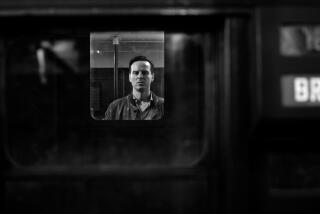LA CIENEGA AREA
- Share via
John McIntosh is a Virginia-based photographer who isolates or groups common and more unusual objects--pushpins, dice, key rings, Chairman Mao’s Little Red Book, cuff links--against stark white backgrounds in order to question their status as representational signs. McIntosh’s strategy owes considerable debts to Minimalism, particularly through his use of the series and frontal perspective, but it also explores (and exploits) the ideological and economic ramifications of mass production and conspicuous consumption.
Thus three pushpins are arranged in triptych form, identical in shape and size, yet distinguishable by virtue of their difference in color, in much the same way that, for example, a new car carries one’s personal “stamp” by virtue of its being red, blue, or green. Color thus becomes a code of difference over pure form, just as it can equally suggest repetition (and by extension conformity) in the case of Mao’s Red Book. Signification thus depends on context, interpretation and packaging. In short, it can be manipulated politically and artistically.
McIntosh exploits these contradictions of repetition and difference more specifically in a series of four photographs of chairs designed by Charles Eames. Grouped together, the chairs lose their individuality and aura as high design and become yet another series of common objects, presented with all the anonymity of a mail order catalogue. Simultaneously, however, we now begin to see more banal household items--the safety pin, the corkscrew--as equally impressive design achievements, overlooked because they lack a designer label. Value thus becomes a question of naming and framing, while signage as a whole becomes dictated by language. McIntosh’s strength is that he refuses to exempt his own work from such a critique. We leave the gallery impressed by the images’ ability to shape our response, to both reveal and conceal its deceits. (Asher/Faure, 612 N. Almont Drive, to May 3.)
More to Read
The biggest entertainment stories
Get our big stories about Hollywood, film, television, music, arts, culture and more right in your inbox as soon as they publish.
You may occasionally receive promotional content from the Los Angeles Times.










